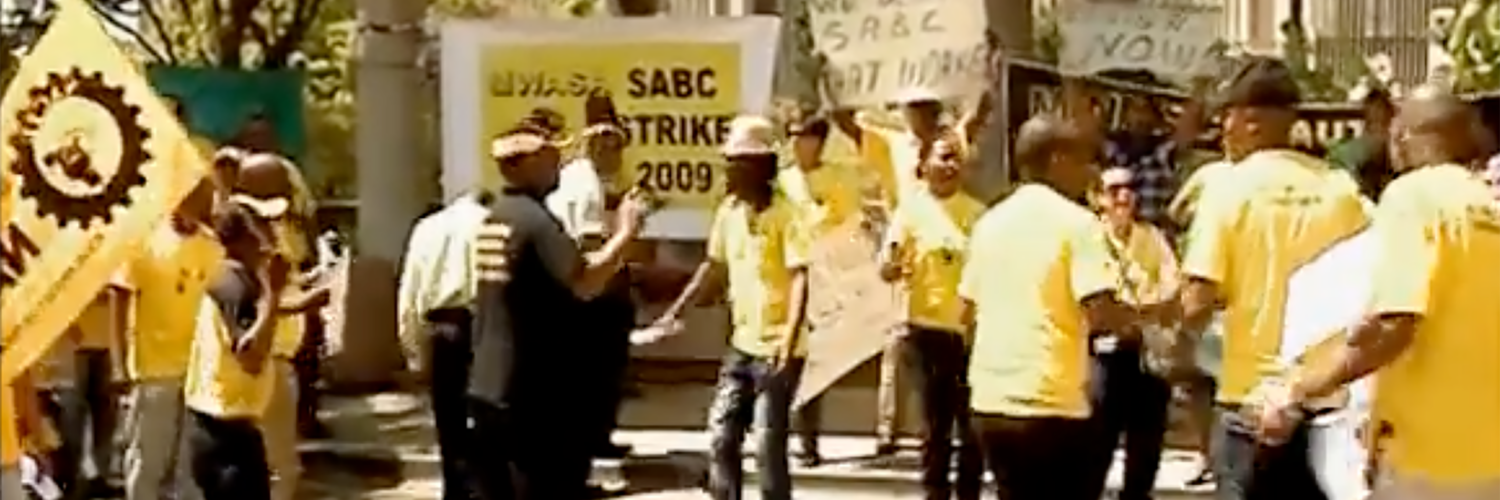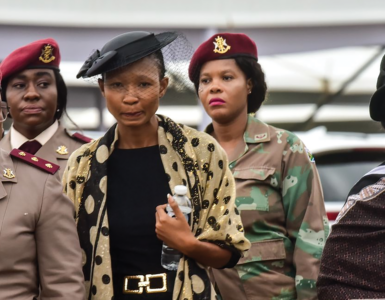PRESERVE: How a black -led media union taught the world a thing or two about non-racism and political non-secretarianism
By Sthembele Khala
The apartheid system of the National Party weaponised racial diversity. At its birth in 1978, the Media Workers Association of South Africa (Mwasa), which was initially known as the Workers Association of South Africa (Wasa) held talks of normalising the absurd situation in which black and white journalists belonged to two different trade unions.

A decision by Mwasa to be an industrial union did not ameliorate these difficulties. Dynamite comes in small packages – on its own it could light a fire, extremely difficult to put out, its size notwithstanding.
Members of Wasa, the successor union of the then banned Union of Black Journalists (UBJ) knew there was more to it than just its own power and strength.
They decided not to be complacent – they were all set to change the industry. There were efforts to disqualify Mwasa from the International Federation of Journalists (IFJ)) on the basis that it was no longer a bona-fide journalist professional union, but an amalgamation.
The rule of the federation is similar to that of FIFA of one union in each country. The IFJ was the largest World Federation with about 130 members throughout the World. South Africa had two – the SAUJ and Mwasa. Both were recognised as members.
Black journalists had a unique socio-political dynamics and challenges. Even though they were an elite class, the envy of many – they were in the same position as anyone of the same skin colour working in a factory – subjected to the same atrocious and inhuman conditions affecting black citizens.
They also knew in their heart of hearts, their fame and status were partially sponsored by their less considered colleagues They refused to be complicit to the malpractice and broke rank.
Mwasa was formed at a national conference in Cape Town in 1978, with Zwelakhe Sisulu elected its first president. Sisulu, now deceased, was the son of the ANC stalwart, Walter Sisulu, also deceased. Workers had a dual task – doing factory work during the day, and fighting for freedom after hours.
Mwasa’s task was to represent its members, to ensure proper working conditions, and to ensure fair remuneration and reward.
The union also sought to change the perception that Africans were merely interested in crime and football stories.
The union also sought to fight for a space to enhance an environment where it could said with certainty that the media was free, and that censorship had no place in the country.
In 1963, the Publications and Entertainment Bill was passed. Many stories were pulled out of the press and the UBJ was banned with a host of other Black organisations and entities in 1977.
During the same year, Steve Biko died in detention at the hands of the apartheid police. Following this earth-shuttering event, journalists across the political spectrum asked difficult questions.
The South African security police and their collaborators, in the medical fields, judiciary and everywhere, were exposed.
The damage caused by the fourth estate supporting and collaborating with the status quo was often underestimated.
The state was not remorseful, in fact it was nonchalant, dug its heels and became more suppressive and devious.
After all, it had reliable media partners to spread its venomous agenda and continue to fool the people. Mwasa and the SAUJ started the anti-censorship campaign, to fight this diabolic scourge that was an attack to free speech.
The South African media landscape was a monopoly. There were several titles under monopolies. Most of the Afrikaans newspapers were either government-owned or partially government-owned. But they were all pro-government.
In addition, the government controlled the SABC. At the SABC, the workers were not allowed to be unionised.
Testifying before the Truth and Reconciliation Commission (TRC), the SABC admitted, that some of them were physically assaulted for work-related mistakes. Media workers, who placed their lives on the firing line for the general good and acceptance of Mwasa as a representative union, deserve special praise.
But the key purpose of the media, especially the Afrikaans media, was to create Afro-pessimism in line with the bigger international media agenda. This is a political tool used to convince Africans and the world that they were not good enough.
They should not have undesirable expectations of themselves. They are losers who should accept God’s plan, which was that they were meant to be subordinate to white interests.
This attacked the African self-esteem, causing them to doubt their own abilities. This tool delayed our liberation. It was the Western media that gave Africa a miserable face – an image of melancholy and grief.
Such media spread images of Biafra as the face of Africa and the attendant kwashiorkor as the health state of its people. This was a campaign to demonise Africa, and justify the brutal exploitation of its minerals.
The responsibility to reverse this curse, fell on South Africa under the leadership of organisations such as Mwasa.
Mwasa had to make concessions that were deep and far-reaching to facilitate this new vision after 1994.
The worst consequence of the absence of a free media is how all forms of state abuses are overlooked and how the truth is concealed.
This was done under the pretext of suppression of communism, preservation of state security and, a host of other heinous excuses, using legislations such ad the Protection of State information Act and more viciously, the application of section 205 of the Criminal Procedure Act, among others, to suppress dissent.
This dark and gloomy period preceded the revelation of the unveiling of Vlakplaas atrocities.
The BOSS or the Bureau for State Security led this phase in the creation of a terrorist state. The state, under the leadership of General Hendrik van den Bergh, went rogue.
Formal state institutions and ministers had little or no idea at times of what BOSS and its leadership were up to, not even in parliament.
It was no surprise that the Minister of Justice, Jimmy Kruger sounded so dumb when he had to explain the death of Steven Biko.
He is remembered for his cold response, “his deaths leaves me cold”. Many freedom fighters were tortured and killed in detention, held incommunicado under section 6 of the Terrorism Act – with no access to lawyers, friends, family, or any sort of representation.
The sterling work by the Afrikaans Newspaper Vrye Weekblad exposed the biggest scandal of the apartheid security cluster: the Vlakplaas and its work. The wanton murder and other hitherto unexplained villainous activities of the state, were exposed.
Large sections of the English media, took a different approach to the one of their counterparts in Western Europe and America. They chose to be on the side of justice.
Many paid a heavy price for this. They were imprisoned and tortured, banned and banished. Mwasa was right behind them.
Journalist Jon Qwelane was attacked in his home in Chiawelo and had to run for his life, for the story of Stompi Seipeng, a 14 year-old boy who died under mysterious circumstances.
In January of 1994, Ken Oosterbroek who worked for The Star, was shot dead in line of duty in Thokoza, Ekurhuleni.
Radio personality Treasure Tshabalala was attacked and survived the attack on the East Rand. In April of 1994, Abdul Shariff a freelance photographer was shot dead on the East Rand.
Some areas in SA had become no-go areas for the media. Mwasa executive had a meeting with political organisations.
A delegation led by Mathatha Tsedu visited Ulundi, to have these discussions with the IFP, under the leadership of the late Chief Mangosuthu Buthelezi.
That, in a nutshell, gives a perspective Mwasa in the struggle to preserve media freedom.
* Khala is former Mwasa secretary-general






